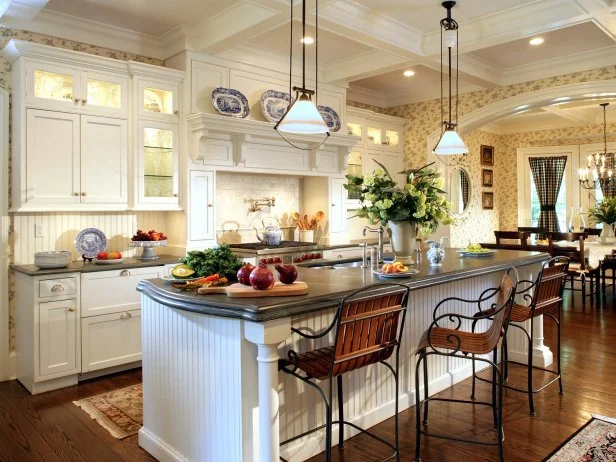Discover Sturdy and Decorative Legs For Kitchen Island Makeovers
Vital Elements to Think About When Choosing Legs For Kitchen Island
Choosing the appropriate legs for a cooking area island involves a mindful assessment of numerous factors that can dramatically influence both performance and aesthetic charm. As we discover these elements, it comes to be clear that each decision can have significant effects for the overall kitchen area experience.
Product Options
When selecting legs for a kitchen area island, understanding the different product alternatives is vital for attaining both visual appeal and structural integrity (Legs For Kitchen Island). The selection of material substantially affects not just the sturdiness of the island yet additionally its overall style and capability
Metal legs, frequently made from stainless steel or functioned iron, add a modern-day and industrial feel while ensuring resilience and security. These materials are immune to put on and can sustain considerable weight, making them excellent for bigger islands.
One more alternative is engineered products, like MDF or plywood, which can be much more cost-effective while still supplying a variety of finishes. They might not give the very same level of stability as strong wood or steel. Legs For Kitchen Island. Last but not least, products such as acrylic or glass can produce a contemporary appearance, though they may require added assistance to guarantee stability.
Ultimately, the selection of product for kitchen island legs should straighten with the desired performance and the overall motif of the kitchen area.
Style and Style

When taking into consideration style, the shape and finish of the legs are crucial. Tapered legs can offer a sense of lightness and style, while thicker, more robust legs can convey strength and stability. Additionally, the finish-- be it repainted, tarnished, or all-natural-- ought to match the cabinets and countertop materials to create a unified appearance.
In addition, the layout of the legs can additionally show individual preference. Personalized or attractive legs, such as those featuring elaborate carvings or unique geometric forms, can function as focal points, including personality and individuality to the kitchen area. Eventually, the best choice will certainly not only enhance functionality but also boost the visual appeal, making the kitchen island a standout attribute of the home.
Height Considerations
Picking the suitable elevation for kitchen island legs is critical, as it directly influences both functionality and convenience. The basic elevation for a kitchen area island commonly ranges from 36 to 42 inches, lining up with usual counter top heights.

It is likewise visite site necessary to make up individuals' heights and choices. Personalizing the height can ensure a comfy experience for all member of the family, making the cooking area island a much more pleasurable and functional room.
Weight Support
Ensuring ample weight support for cooking area island legs is crucial for both safety and capability. The kitchen area island often offers multiple functions, including food prep work, dining, and extra storage, demanding a robust assistance structure. When choosing legs, it is crucial to think about the overall weight capability called for based on the island's meant use and the products that will be put on it.
The selection of material for the legs plays a substantial role in their weight-bearing abilities. Strong timber, metal, and durable composites normally provide exceptional toughness contrasted to lighter materials. Furthermore, the layout of the legs-- whether they are straight, tapered, or have a pedestal form-- can affect their capacity to distribute weight successfully throughout the structure.
Furthermore, the leg positioning need to be visit their website strategically planned to improve security. Legs placed at the edges or with a larger base can much better sustain heavier lots. Constantly speak with the maker's specs pertaining to lots limits to ensure that the legs can maintain the desired weight without compromising safety. In summary, choosing kitchen area island legs with appropriate weight assistance is necessary for developing a practical and safe cooking room.
Installation and Maintenance
Appropriate setup and maintenance of kitchen island legs are important for ensuring durability and security. This commonly involves protecting the legs to the island base using proper bolts, making certain that the legs are level and straightened.
Once mounted, regular upkeep is necessary to protect the honesty and appearance of the legs - Legs For Kitchen Island. For wood legs, regular cleaning with a wet cloth and application of appropriate timber polish can stop dampness damage and keep their finish. Metal legs might require a gentle cleansing solution to eliminate oil and crud, followed by a address completely dry towel to avoid corrosion formation
In addition, inspect the legs frequently for indications of wear or damages, such as splits or loosened joints. Tightening up screws or screws as required can additionally lengthen the life expectancy of the legs. By sticking to these installment and upkeep practices, property owners can guarantee that their kitchen area island stays durable and aesthetically appealing for many years to find.
Final Thought

Visual coherence is critical in picking the design and layout of legs for a kitchen area island, as these components greatly influence the overall atmosphere of the area. Conical legs can give a feeling of agility and elegance, while thicker, much more robust legs can convey stamina and security.Picking the appropriate height for kitchen island legs is important, as it directly affects both performance and convenience. In summary, choosing kitchen area island legs with appropriate weight assistance is necessary for creating a safe and functional cooking room.
In verdict, picking legs for a cooking area island demands cautious consideration of different elements, including material options, style, elevation, weight assistance, and setup.